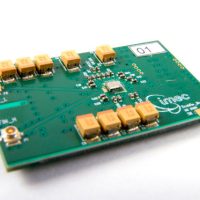What are the cons of a curved monitor? Curved monitors have gained significant popularity in recent years, offering an immersive viewing experience and sleek design. However, like any technology, they come with their own set of drawbacks. In this article, we will delve into the cons of curved monitors, providing you with a comprehensive analysis to help you make an informed decision.
What are the cons of a curved monitor?
1. Limited Viewing Angles:
One of the primary drawbacks of curved monitors is their limited viewing angles. While they excel at providing an immersive experience for a single viewer sitting directly in front of the screen, the curvature can cause distortion and reduced visibility for those viewing from the sides. This limitation makes curved monitors less suitable for collaborative work environments or situations where multiple people need to view the screen simultaneously.
2. Distortion and Image Quality:
Curved monitors may suffer from image distortion, especially towards the edges of the screen. This distortion can be more pronounced in larger curved monitors, leading to a slight warping effect on straight lines and text. Additionally, some users may experience a decrease in image quality due to the curvature, as it can affect color accuracy and sharpness. While manufacturers have made significant advancements in minimizing these issues, they still persist to some extent.
3. Limited Compatibility:
Another drawback of curved monitors is their limited compatibility with certain software and applications. Some older programs or games may not be optimized for curved screens, resulting in distorted graphics or stretched images. Additionally, video editing or graphic design software that relies heavily on precise measurements or straight lines may not work optimally on curved displays. It is crucial to consider the compatibility of your preferred software before investing in a curved monitor.
4. Higher Cost:
Curved monitors generally come with a higher price tag compared to their flat counterparts. The manufacturing process for curved screens is more complex, leading to increased production costs. Additionally, the demand for curved monitors is still relatively niche, which further contributes to their higher price point. If budget is a significant concern, a flat monitor may be a more cost-effective option.
5. Limited Mounting Options:
Mounting a curved monitor can be more challenging compared to a flat screen. The curvature of the display may require specialized mounting brackets or stands, which can be more expensive and harder to find. This limitation can be particularly problematic if you prefer a multi-monitor setup, as finding compatible mounts for curved screens may be more difficult.
Conclusion:
What are the cons of a curved monitor? While curved monitors offer an immersive and visually appealing experience, it is essential to consider their drawbacks before making a purchase. Limited viewing angles, potential distortion, compatibility issues, higher cost, and limited mounting options are factors that need to be weighed against the benefits. Ultimately, the decision to invest in a curved monitor should be based on your specific needs and preferences.



